The evergreen thuja in the form of a shrub or tree is a coniferous representative of the Cypress family. It is very popular among landscape designers and especially loved by ordinary gardeners and summer residents. This crop is ideal for landscaping a personal garden.With its help, you can create a hedge, an original flower bed or flower garden, arrange an alley and an alpine hill, and plant a border along the path.
|
Thuja is not only aesthetically attractive and has a pleasant aroma, but is also highly resistant to cold and is unpretentious in cultivation and care. |
| Content:
|
The highly decorative conifer in many European countries is classified as a plant of high society and is even called the “royal tree.” In the natural environment, the crop can reach enormous sizes - about seventy meters in height and up to six meters in trunk diameter. In cultural horticulture, trees and shrubs usually do not exceed eleven meters.
|
Thuja is a long-liver; it can delight with its beauty for one and a half hundred years. |
There are about a dozen plant species and more than a hundred varieties in the genus. Columnar and spherical crops are planted in open ground - in single plantings and in compositions, and dwarf species - in tubs, pots and other containers.
Thuja - how to plant and care for it correctly
To fully grow thuja in open ground, it is necessary to correctly select a place and prepare the soil, carry out proper planting (taking into account the chosen season - spring, summer or autumn) and carry out further care according to the requirements and preferences of the plants.
Choosing a landing site
The choice of a site suitable for thuja must be approached responsibly; its development and appearance will depend on this.Coniferous plants do not like bright sunlight. If exposed to the sun for a long time, the needles will gradually turn yellow and fall off. In dense shade, the crop will lose its attractive appearance, become pale and slow down in growth.
|
The optimal place should be illuminated by the sun only in the afternoon, and in the morning and afternoon should be in partial shade. |
Strong and sharp gusts of wind are also undesirable for bushes and trees, especially for young specimens. In open areas, it is recommended to build a protective barrier or strong support immediately after planting.
The depth of groundwater is of no small importance. They should be as close to the surface as possible and provide the plants with a constant supply of moisture. Old massive plant crops or plantings with a powerful root system should not grow nearby, as they will take a large amount of moisture and interfere with the normal growth of the thuja.
Soil preparation
Coniferous perennial prefers nutritious soil with sufficient moisture and low acidity. These can be sandstones, loams, peat and clay areas, each of which must be prepared for planting seedlings.
For example, in a clay area, a mandatory drainage layer is used, and in a peat area, drainage pipes are used. Sandy areas are diluted with organic matter and fertile soil. Broken red brick and crushed stone, expanded clay and gravel are used as drainage material.
To fill the planting hole, you can use a purchased soil mixture intended for coniferous crops. If all the recommended components are present - peat, sand, rotted humus, compost, turf soil, the substrate is prepared independently.To do this, choose one of the proposed recipes or use your own experience.
Attention! In areas with heavy clay soil, coarse river sand is required in the soil mixture, and in sandy areas, organic matter is required.
- Two parts of turf soil and one part each of peat and humus.
- Three parts turf soil, one part sand and two parts rotted humus.
- Two parts of leaf or turf soil, one part each of peat and sand.
- Three parts of rotted humus, two parts of leaf soil and coarse sand, one part of peat.
On a note! It is recommended to add from fifty to one hundred grams of superphosphate to the substrate prepared at home for quick rooting. To prevent the fertilizer from causing burns to young roots, it should be thoroughly mixed with all components.
|
Before planting, the area is thoroughly cleaned. It is especially important to remove all weeds and debris. |
The depth and width of the planting pit for tall species is from seventy centimeters to one meter, for dwarf species – from forty to fifty centimeters. The thickness of the drainage layer depends on the type of soil and ranges from ten to twenty centimeters.
The distance between plantings is from one and a half to four and a half to five meters, depending on the type of plants and the purpose of planting seedlings. For spring planting, planting holes are filled with a nutrient mixture in the fall.
Planting thuja in open ground in spring
- The optimal period for spring planting of thuja is the second half of March or the first half of April. It all depends on the region and local climate. In southern latitudes the procedure is carried out earlier, and in northern latitudes later.
- Drainage is placed at the bottom of the hole, watered abundantly and part of the prepared nutrient soil mixture is filled in.
- The seedling is placed in the center on a mound of earth, the roots are straightened (if the root system is open), and covered with soil.
- After the soil settles, the root collar should be at soil level, so when planting it is left three to four centimeters higher.
Important! If the root collar is located above or below the ground, then the coniferous crop will not be able to fully develop and, most likely, will die.
- After filling the planting hole with soil, it is carefully compacted and the first abundant watering is carried out. One seedling requires about twenty liters of water. First, pour out half, wait until the water is absorbed, then pour out the rest of the water.
- Planting work is completed by applying mulch from wood chips, compost, peat or shredded bark around each young plant.
How to care for thujas
Trees and shrubs do not need any special care. Traditionally, crops are watered, fertilized, the soil around the plants is cared for, pruned, protected from pests and various diseases, and prepared for the winter.
Watering requirements
The moisture-loving thuja will definitely give a signal if the amount of watering does not suit it. The top beginning to turn yellow indicates a lack of moisture in the soil. This cannot be allowed. Excessive watering is also undesirable. It is necessary to find a middle ground in this matter. Typically, in the first three to four weeks after planting, each seedling requires one watering per week in the amount of ten to fifteen liters. The soil in the tree trunk circle should not dry out, much less form a crust on the surface.
|
In the warm summer, the frequency of watering can be doubled, and on dry and very hot days - even three times.The volume of irrigation water will also increase, by about five to ten liters. |
Crops have a positive attitude towards sprinkling. During such water procedures, they are cleaned of dust and become fresh and bright in color. They are held in the evening or morning hours. It is recommended to alternate crown irrigation and watering.
Application of fertilizers and fertilizers
When planting thuja in fertile soil with a sufficient amount of nutrients, additional feeding will not be required in the first year. Starting from the second year of life, conifers are fed at least twice a season - in spring and autumn with mineral and organic compounds.
Reference! The best option for thuja is complex mineral fertilizers for coniferous crops. You can use Kemira Universal, Fertika, Agricola, Royal Mix, Florofit and Compo.
In the spring, to strengthen the root system of young and adult plants, a solution of ten liters of water and forty to fifty grams of potassium sulfate is added to the soil. For a young crop, one to two liters is enough.
|
During the summer months, it is recommended to apply organic matter at two-week intervals. |
At the end of the summer season or at the very beginning of autumn, you can use granular additives with a large number of macro and micro elements that shrubs and trees will need to maintain vitality and a favorable winter. Fertilizers are embedded in the ground along the entire trunk circle, equal to the diameter of the crown.
How to care for the soil
After each watering, the soil must be loosened to a depth of six to eight centimeters. It is very important to remove weeds regularly.All this will not be required if the area under the thujas is covered with mulching material - crushed nut shells, straw or compost. Decorative mulch (for example, painted sawdust) will make the area festive and even more attractive.
Thuja pruning - types and frequency
Pruning is an important component of thuja care. After such procedures, the culture becomes more lush and dense, it looks healthy and well-groomed. To get a positive result from a haircut, you need to know some of its features.
- Pruning of shoots is carried out in warm, dry weather.
- Spring pruning is carried out before the buds open. Its purpose is to remove dried, frozen, damaged and diseased branches.
- Thujas in hedges are trimmed regularly to achieve a certain shape of the crown and the entire bush.
- Artistic pruning will help give plants a specific shape.
- To stimulate the growth of the crop in width, when choosing the right variety of thuja, it is necessary to periodically cut off the top.
- Single crops require timely thinning of shoots.
- The first pruning begins in the third year of the seedling's life.
- The main pruning is carried out twice a year - in spring and autumn.
On a note! It is recommended to treat sharp pruning shears or ordinary garden shears with a disinfectant solution before use. After trimming the bushes, the cut areas are also treated with a special solution or sprinkled with charcoal.
Pest and disease control
Possible pests are false scale insects, aphids, caterpillars. For the fight, drugs are used - “Karbofos”, “Decis”, “Chlorofos”, “Aktellik”, “Rogor”, “Enzhio”. It is recommended to carry out at least three treatments with various means at an interval of fifteen to twenty days.
Possible diseases are cytosporosis, fusarium, brown scute, rust. A common reason for their appearance is violation of the rules of care, prolonged damp weather, dense shade during the day, and a thickened crown. The drug “Kartotsid” is used for treatment. Spraying is carried out twice a month until complete recovery.
For prevention in early spring, plants are sprayed with organic solutions, Fitosporin - M, Epin or Bordeaux mixture.
How to properly plant seedlings with a closed root system in summer
In the summer, you can also plant thuja, but for better survival it is recommended to use only seedlings with a closed root system.
- It is best to transfer seedlings to open ground on a cloudy, cool day, in rainy weather, or in the evening, after sunset, so that young plants do not get burned.
- Seedlings must be purchased from nurseries or specialized stores. For several days before planting, plants in containers are kept in shady areas, maintaining moderate moisture in the soil.
- One to two hours before planting, young bushes and trees are watered generously with a solution containing a growth and root formation stimulator. This will not only add vitality to the seedlings, but will also make it easier to remove them from the planting containers. You can use the following drugs: “Zircon”, “Epin”, “Kornevin”, “Heteroauxin”.
- Lightly tap the container around its entire circumference, tilt it to one side and carefully remove the bush along with the earthen lump.
Important! A seedling with a ball of earth should be outside the container for no more than ten minutes.
- The young plant is planted in a prepared hole, watered, and the surface of the soil around the bush is mulched.
- Summer planting is a real stress for thuja, which can lead to a long process of rooting in a new place and yellowing of the crown. This can be avoided by several sprays in the morning or evening with solutions based on Epin or Zircon.
Attention! In the first fifteen to twenty days after planting, it is recommended to shade coniferous crops from direct sunlight and regularly water them abundantly.
Planting thuja in autumn
Autumn planting of thuja has its own subtleties, advantages and a number of features.
- The rainy autumn season frees gardeners from watering and irrigating the crowns of planted crops.
- Planting material can be purchased at a more affordable price than in the spring.
- Free organic materials that are available in sufficient quantities in the autumn garden (for example, fallen leaves) are perfect for preparing a nutrient substrate and mulch, thereby saving the family budget.
- The optimal period for planting is from early September to mid-October.
- The most suitable age for a seedling is three or four years. It is advisable to purchase plants with a closed root system.
- A layer of turf (grass side down), a layer of dry leaves about five centimeters thick and a soil mixture are placed in the planting hole, to which pine litter, potassium sulfate and superphosphate must be added.
- The root collar is left at the level of the soil surface.
- After the soil settles in the hole, it is necessary to add more soil, water it generously and apply a mulching layer of sawdust, leaves, loose compost or crushed bark at least five to seven centimeters thick. After this, the thuja is tied to a support and shading is constructed from mesh or other suitable materials.
On a note! Mulch is applied to the tree trunk area within a radius of approximately fifty to seventy centimeters from the bush.
Planting a hedge of thuja
When choosing seedlings for hedges, it is necessary to choose fast-growing varieties that are characterized by increased endurance and unpretentiousness. They will have to grow close to each other, which means there will be a lack of light and air. Experienced gardeners recommend purchasing varieties: “Brabant”, “Smaragd”, “Columna”, “Spiralis”, “Pyramidalis compacta”, “Little Champion”, “Kornik”, “Wagnery”, “Holmstrup”, “Rosenthal”, “Fastigiata” "
|
In order for coniferous crops to grow in width, it is necessary to trim the tops a little. |
The interval between plantings depends on the selected variety and the size of the root system of the young bush. On average it is about fifty to sixty centimeters. The depth of the planting hole is approximately half a meter. When planting crops in two trenches located in parallel rows, you can arrange the seedlings in a checkerboard pattern. The row spacing is about one meter.
All areas near new plantings are mulched. Caring for planted perennials consists of regular watering and formative pruning.
Reference! When planting a hedge of thuja along the fence, it is recommended to maintain a distance of one meter between the fence and the plants.
Rules for transplanting thuja
If there is an urgent need to transfer the thuja to another area, then you should approach this procedure carefully and prepare for it in advance.
Mature shrubs and trees are marked approximately six to twelve months before transplanting along the digging line (along the circumference), that is, the soil is cut into the bayonet of a shovel.Before the scheduled date, the crop will form many young roots, which will prevent the earthen coma from collapsing during transplantation and will help to quickly adapt and take root in the new territory.
|
Young plants are much easier to remove from the soil along with a lump of earth, having previously moistened it abundantly. |
Large plants are carefully placed on a cart and transported to the chosen location. Pour two buckets of water into the planting hole and add one bucket of nutritious soil mixture and mix. Thuja is placed in the resulting slurry, the voids are filled with soil, lightly compacted, watered generously and mulch of crushed pine cones or pine bark is applied.
Don't forget to read:
Preparing the plant for wintering
Depending on the type of thuja, preparation for winter differs in some respects. For example, the most frost-resistant Western species in almost all regions do not need winter shelter. Oriental and Japanese species, on the contrary, will disappear without insulation. For some, it is important to insulate only the root part, and for others, the entire crown too. When choosing a seedling, you need to find out all the detailed information about a specific variety, regarding care.
Attention! In the first five years, it is recommended to cover all varieties and varieties of thuja for the winter, regardless of the weather and climatic conditions of the region.
There are several general rules and recommendations for preparing coniferous crops for winter.
- At the beginning of autumn, it is recommended to feed thujas with liquid fertilizers, which have a beneficial effect on root growth.
- In mid-autumn it is necessary to prune broken, diseased and yellowed shoots.
- Young bushes and trees must be attached to a reliable support that will not allow strong and cold winds to damage the plant.
- The roots are covered with a layer of fallen leaves, straw bales, peat or spruce branches.
- The spreading crown is tied with twine or wide braid so that it does not break under the weight of the snow caps. During periods of severe frost, the tree is covered with burlap or other breathable material.
- To protect the needles from sun rays in February - March, it is recommended to treat the crowns of plants with special preparations against sunburn.
Conclusion
The evergreen garden beauty does not require much time and attention when growing, but it has a beneficial effect on the composition of the air, relieves nervous tension, and improves mood. When planting thuja, any corner of the garden, lawn, or garden area is transformed, becoming more attractive and cozy.

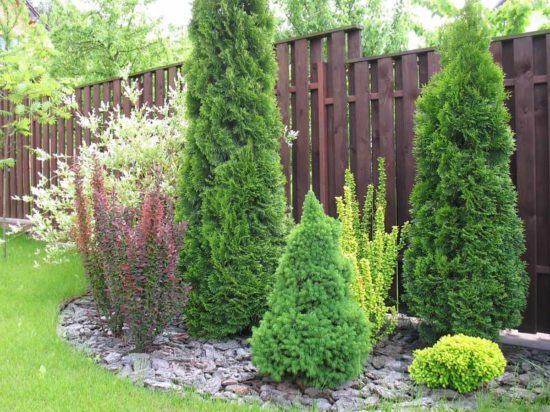
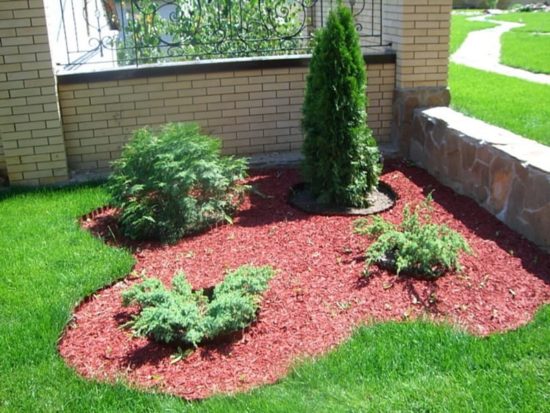
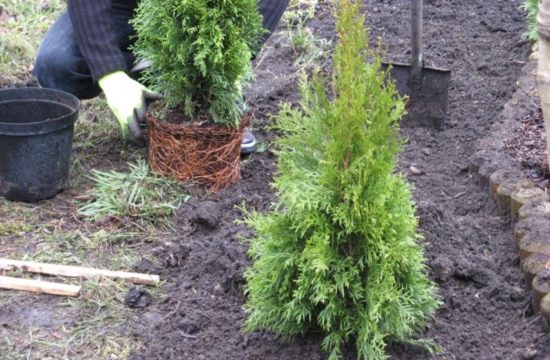
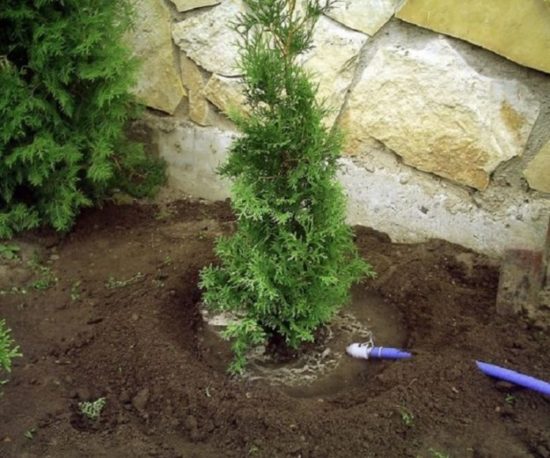
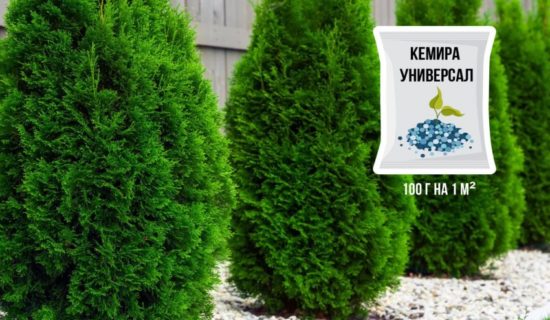
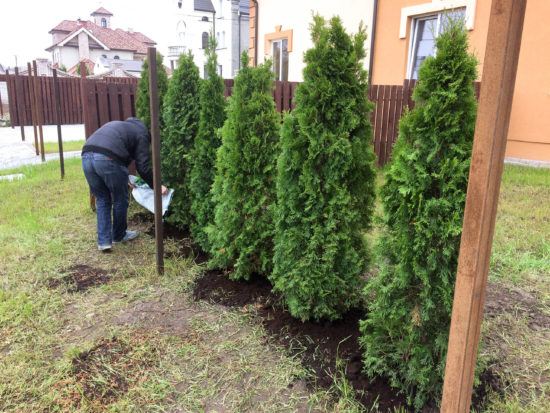
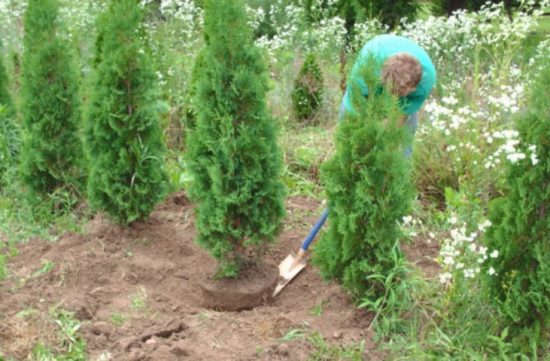


 CUCUMBERS NEVER GET SICK, I'VE BEEN USING ONLY THIS FOR 40 YEARS! I SHARE A SECRET WITH YOU, CUCUMBERS ARE LIKE THE PICTURE!
CUCUMBERS NEVER GET SICK, I'VE BEEN USING ONLY THIS FOR 40 YEARS! I SHARE A SECRET WITH YOU, CUCUMBERS ARE LIKE THE PICTURE! You can dig a bucket of potatoes from each bush. Do you think these are fairy tales? Watch the video
You can dig a bucket of potatoes from each bush. Do you think these are fairy tales? Watch the video
 How our fellow gardeners work in Korea.There is a lot to learn and just fun to watch.
How our fellow gardeners work in Korea.There is a lot to learn and just fun to watch. Eye trainer. The author claims that with daily viewing, vision is restored. They don't charge money for views.
Eye trainer. The author claims that with daily viewing, vision is restored. They don't charge money for views. A 3-ingredient cake recipe in 30 minutes is better than Napoleon. Simple and very tasty.
A 3-ingredient cake recipe in 30 minutes is better than Napoleon. Simple and very tasty. Therapeutic exercises for cervical osteochondrosis. A complete set of exercises.
Therapeutic exercises for cervical osteochondrosis. A complete set of exercises. Which indoor plants match your zodiac sign?
Which indoor plants match your zodiac sign? What about them? Excursion to German dachas.
What about them? Excursion to German dachas.
Conifer lovers do not need to advertise thujas - this is one of the favorite plants among summer residents. Read in our material what forms and varieties of thuja there are and how to care for them when planting in open ground
It is also recommended to first disinfect the soil, which is easily done by using a concentrated solution of potassium permanganate, easily recognizable by its bright pink hue. Before planting, the seeds will still need to be germinated, which will take no more than a day. The seed is left in warm water or moistened sand overnight, and in the morning it is allowed to be used. If seedlings are grown in a pot, then as they grow, it is not necessary to transplant the plants into separate containers, unless the seedlings are too dense and there is enough space for each specimen.In the first year, future thujas will only need regular irrigation of the land. The plant should be grown in the shade, maintaining temperatures from 17 to 23 degrees Celsius. Ideally, these should be the window sills of windows facing north or west. In winter, it is recommended to reduce the temperature to 15 degrees Celsius.
Before planting a thuja, you need to choose a suitable site for it. Thuja is light-loving, but being in the sun for a whole day dehydrates it, and this leads to the fact that thuja does not tolerate winter well. Therefore, the place for the thuja should be bright, but at midday the sun should not fall on it. In addition, thuja does not tolerate drafts. The soil for thuja is desirable to be nutritious - turf soil with the addition of sand and peat, although thuja also grows on less rich soils - swampy, sandy loam and clay. You can plant thuja in spring or autumn, but planting thuja in autumn does not give confidence that the plant will have time to adapt to open ground before winter.
I don't need links to bookmakers